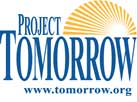Survey says students don't think their schools' tech is current

The recently released 2008 Speak Up survey shows that students feel restricted in using technology when they enter schools and suggests that this signals weakness in U.S. global competition. Although the survey found agreement among parents, teachers and principals that implementing technology in schools is crucial to student success, students don’t seem to feel that their schools’ technology use is up to date. This year, the Speak Up survey will focus specifically on K-12 students’ opinions on the impacts of the current education stimulus funding. The most recent survey reveals the disconnect in opinions between students, parents and principals:
-39% of high schoolers think their school is doing a good job preparing them for jobs of the future.
-Only 32% of parents believe this.
-56% of school principals think their school is doing a good job.
When asked about how schools could make it easier for students to work electronically, the most common response (one-third of the 3rd-12th grade students polled) was that schools should let students use their own devices and tools during the school day, including laptops, cell phones, MP3 players and the option to communicate with classmates via email or IM. Other barriers to using technology effectively at school, as reported from 6th-12th grade students:
- 43% report their technology use is impeded by school filters or firewalls blocking access to websites the students need
- 35% blame teachers who limit their technology use
- 26% cite rules that limit their use of technology at school
Students and parents expressed interest in the digital textbook, with 29% of middle and high school students currently using some kind of online textbook or curriculum as part of their regular schoolwork. Student suggestions on the best digital textbook include:
Tools and ideas to transform education. Sign up below.
- The ability to personalize their book with electronic highlights and notes (63%)
- Quizzes and tests for self-evaluation (62%) or self-paced tutorials (46%)
- Access links to real-time data such as NASA and Google Earth (52%)
- Links to PowerPoint or class lectures that support textbook content (55%)
- Games (57%) or animations and simulations (55%)
- Links to videoconferences (30%) or podcasts from subject experts (34%)
All public and private schools and districts in the US, American schools on military bases and schools worldwide are eligible to participate in the surveys.
